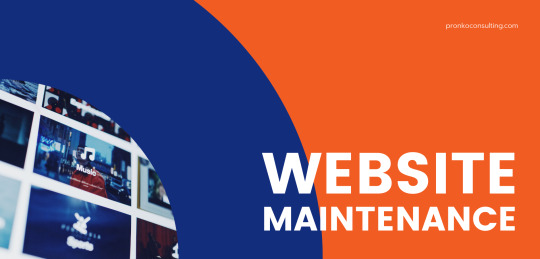Don't wanna be here? Send us removal request.
Text
Unleashing the Power: Supercharge Your Website Performance!
Are you looking to supercharge your website performance? In today's fast-paced digital landscape, a slow-loading website can spell disaster for user engagement and conversions. With so many factors influencing website performance, from page load time and server response time to mobile optimization and SEO ranking factors, it's crucial to optimize every aspect of your site to ensure a seamless user experience. In this article, we will delve into the myriad techniques and strategies that can unleash the power of your website, boosting its performance and leaving your visitors impressed. From server-side rendering and cache optimization to lazy loading images and front-end framework optimization, we'll cover it all. So, get ready to dive deep into the world of website performance and discover how to take your site to new heights of speed and functionality. Let's get started!
Optimizing Website Performance
In today's fast-paced digital landscape, optimizing website performance has become vital for businesses striving to stay ahead. A website's performance directly impacts user experience, search engine rankings, and ultimately, the success of an online venture. To unleash the true power of your website, it's essential to focus on various factors that can supercharge its performance.
Page load time is a critical metric that can make or break user experience. By minimizing server response time and leveraging browser caching, you can significantly improve loading speed. Implementing a content delivery network (CDN) ensures that your website's resources are served from servers located closer to the user's location, further reducing latency. Image compression and minification of CSS/JS files help reduce file sizes, resulting in faster load times and improved performance.

Reducing the number of HTTP requests by combining or asynchronously loading resources can further optimize website performance. Mobile optimization is essential in today's mobile-first world, as search engines prioritize mobile-friendly websites. This involves optimizing layouts, images, and content to ensure a seamless experience across various devices. Considering mobile optimization also factors into SEO ranking, it's crucial for organic traffic growth.
By employing these strategies, businesses can witness substantial improvements in website performance, leading to enhanced user satisfaction, higher search engine rankings, and increased conversions. Optimizing website performance is an ongoing process that requires continuous monitoring, analysis, and refinement. Embracing these techniques and staying up to date with emerging trends will supercharge your website's performance and drive long-term success.
Enhancing User Experience
When it comes to website performance, one of the key aspects to focus on is enhancing the user experience. By creating a seamless and enjoyable browsing experience for your visitors, you not only improve their satisfaction but also increase the chances of converting them into customers.
A crucial factor in enhancing user experience is optimizing mobile responsiveness. With the increasing number of users accessing the web through their mobile devices, it's essential to ensure that your website is fully optimized for different screen sizes and resolutions. This includes implementing responsive design techniques and making sure that all elements are displayed correctly across various devices.
Another important aspect is optimizing page load time. Users nowadays have little patience for slow-loading websites, and a delay of just a few seconds can significantly impact their overall experience. By minimizing HTTP requests, leveraging browser caching, and compressing images and other assets, you can significantly improve your website's performance and reduce load times.
Additionally, prioritizing accessibility is crucial in providing a positive user experience. Making your website accessible to users with disabilities, such as vision or hearing impairments, is not only a legal requirement in many regions but also helps ensure inclusivity. This may involve implementing features like alternative text for images, keyboard navigation, and proper semantic markup.
By focusing on these aspects of user experience optimization, you can create a website that not only performs well but also provides a seamless browsing experience for your visitors across different devices and accessibility requirements. Improving mobile responsiveness, optimizing page load time, and prioritizing accessibility are key steps towards unlocking the true power of your website and maximizing user satisfaction.
Monitoring and Improvement
In order to ensure optimal website performance, it is crucial to continually monitor and make improvements based on the data gathered. By monitoring various performance metrics and analyzing user behavior, you can identify areas that require attention and take the necessary steps to enhance your website's performance.
One important aspect of monitoring is tracking metrics such as page load time, server response time, and user-centric performance metrics. By monitoring these metrics, you can identify any bottlenecks or areas of improvement that may be affecting your website's performance. Additionally, monitoring SEO ranking factors and user experience (UX) metrics can provide valuable insights into how your website is performing in terms of search engine visibility and user satisfaction.
Once you have gathered the necessary data, the next step is to analyze it and identify specific areas for improvement. For example, you may discover that there are excessive HTTP requests or large image file sizes that are slowing down your website. By optimizing User Feedback Integration , such as reducing the number of HTTP requests or compressing images, you can significantly improve your website's performance.
Furthermore, regularly testing and monitoring different aspects of your website, such as server-side rendering, memory usage, and API performance, allows you to proactively address any performance-related issues. This can involve load testing, stress testing, and continuously optimizing your code and infrastructure to ensure optimal performance even under heavy traffic conditions.
In conclusion, monitoring and continuous improvement are pivotal in maintaining and enhancing website performance. By regularly tracking various performance metrics, analyzing user behavior, and making necessary optimizations, you can ensure that your website delivers an exceptional user experience and remains competitive in today's digital landscape.
1 note
·
View note